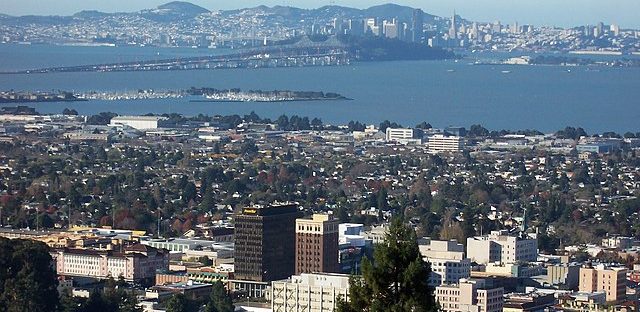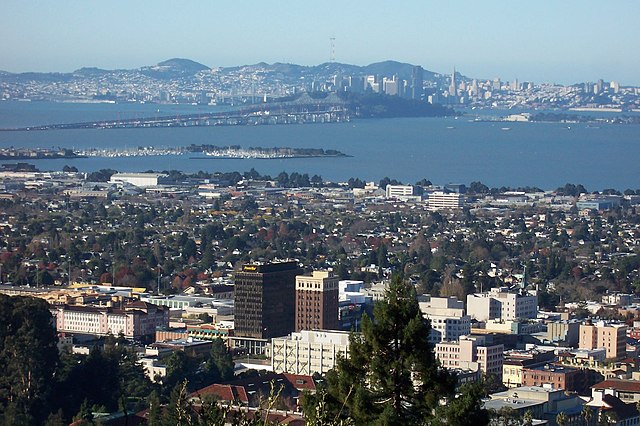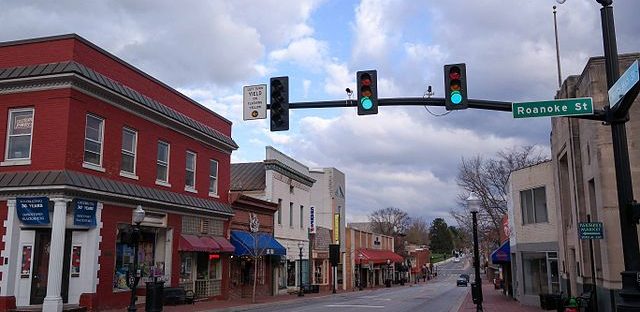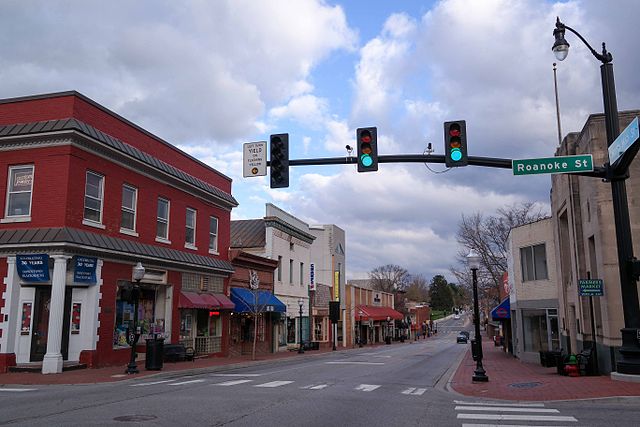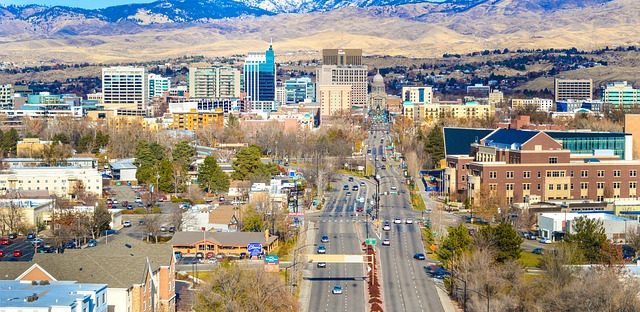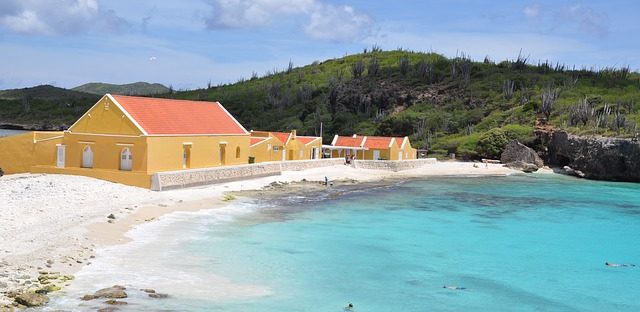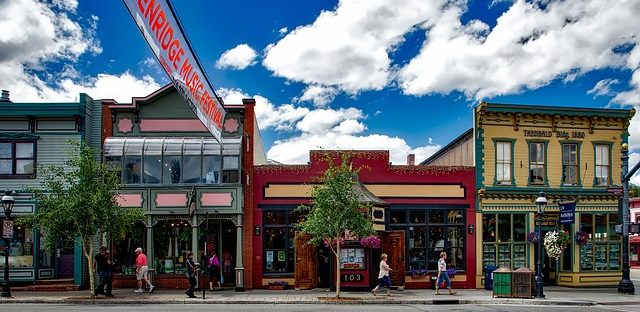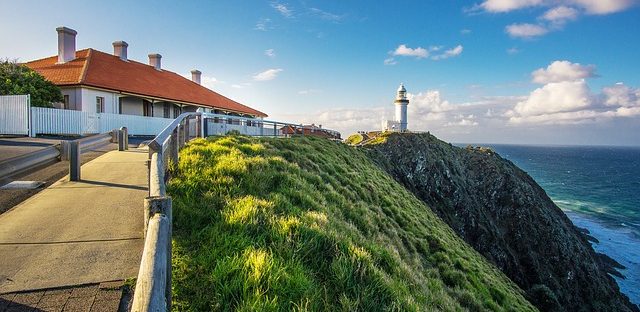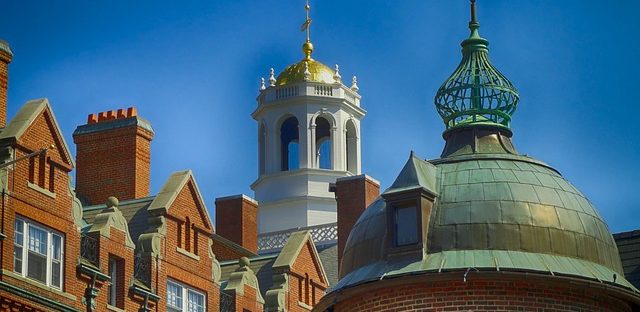- Target: 100% carbon-free energy in electricity, transportation and buildings by 2030, 100% renewable energy by 2035, and net-zero carbon emissions by 2050
- Status: In progress
- RES: Renewable electricity procurement, solar and wind power
- Implementation: The City of Berkeley is committed to 100% renewable energy, as a strategy to mitigate greenhouse emissions and reduce the impact of climate change. The goal followed legislation signed by Gov. Jerry Brown pledging 100 percent clean energy use in California by 2045 and the University of California committing to 100 percent clean electricity use by 2025 and reducing energy use by 2 percent each year through its Carbon Neutrality Initiative.
The city instituted the Berkeley Climate Action Plan, with the vision to reach net-zero energy use for all buildings by 2050 by requiring building owners to assess their energy use, and prioritize sustainable forms of transportation, such as walking, cycling and public transportation. The city also participates Community Choice Energy program, which allows local governments to buy and sell energy — an option that is often cleaner and cheaper for local residents. Berkeley has joined an initiative providing greater access to energy-efficient cars and infrastructure at a lower cost. With other Bay Area cities, the city calls for the end coal shipments. Source: dailycal.org - Population: 121,363 (2019)
- Area: 17.66 sq mi (45.73 km2)
- Link: Recommendations for a Fossil-Fuel Free Berkeley
Tag: – Works in Progress
Blacksburg, Virginia, USA
- Target: 100% electricity community-wide by 2050
- Status: In progress
- RES: Solar power
- Implementation: Blacksburg City Council in Virginia is transitioning to 100% renewable electricity community-wide by 2050 through a series of “solarize” campaigns. It launched the Solarize Blacksburg program to encourage more city residents to go solar by addressing the financial and logistical barriers to installing solar power. The city worked with installers to lower the costs of solar arrays by 16 percent. A neighborhood collective purchasing program was established for the city's communities. Unlike other solarize models which usually start with a neighborhood or team of neighbors getting together to form a co-op, and then vet and choose a contractor that will perform all of the solar installations, the Solarize Blacksburg model involved finding the contractors upfront, getting the companies to agree on specific pricing options and technical specifications, and then letting the community drive the demand. The model succeeded in quadrupling residential solar within 6 months. Despite it being home to Virginia Tech with 70 percent renter-occupied housing, and unfavourable state energy policies for solar, the model worked well. The follow-up program Solarize Montgomery was also very successful, with more than 800 subscribers.The two solarize programs were implemented as one-time programs to avoid the impression that the programs were ongoing which could have resulted in potential participants postponing the decision to sign up. In fact, after a program ended, the adoption of solar continued. Systems already installed in the community encouraged more residents to install solar power. In Montgomery County, solar use grew by 273 percent within three years. Since 2015, residential solar has more than doubled across the state of Virginia, and at least 25 other Virginia communities have created their own solarize programs. Source: governing.com
- Population: 44,233 (2019)
- Area: 19.77 sq mi (51.20 km2)
- Link: 100% Renewables Resolution
Boise, Idaho, USA
- Target: 100% renewable electricity community-wide by 2035
- Status: In progress
- RES: Hydropower, solar, and geothermal energy
- Implementation: Boise City Council in Idaho is committed to a 100% renewable electricity and has adopted the "Boise's Energy Future" plan to reach this goal. It builds on an earlier municipal target set by its mayor David Bieter of 100 percent clean electricity for city-owned buildings by 2030, as well as the goal set by Idaho Power, the electricity utility for the City of Boise 100 percent clean energy system-wide by 2045. The Boise’s Energy Future plan was developed over a year by the city with community organizations and businesses including local utilities. It involved extensive public outreach, including a citywide survey in partnership with Boise State University. The survey revealed that almost 80 percent of citizens either strongly or somewhat agree with the city’s goals to reduce energy use and transition to clean energy. For the city, it was imperative that the 100 percent target emphasises "affordability and equity in access to energy efficiency and clean energy for all residents.” Local renewable energy and technology would help grow its economy, creating good jobs, afford better energy choices for users, and improve public health.
The city's plan lists several cost-effective electricity strategies. It includes supporting new electricity generation, increasing consumer participation in efficiency programs and Green Power Program, encouraging rooftop and community solar installation, and procuring green power for municipal buildings. Source: Boise's Energy Future Plan - Population: 228,959 (2019)
- Area: 84.73 sq mi (219.45 km2)
- Link: Boise Energy Plan
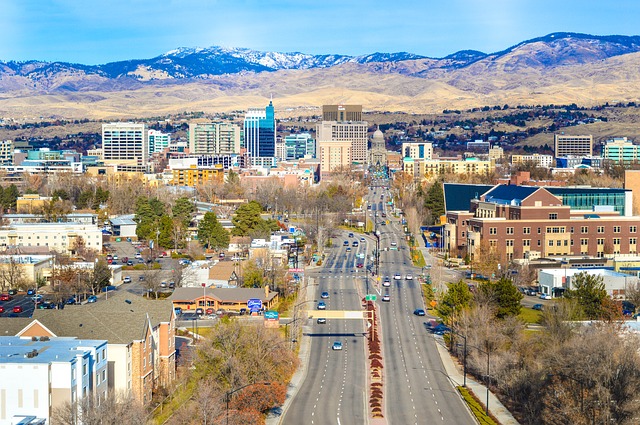
- © Pinpals
Bonaire, Caribbean Netherlands
- Target: 100% of renewable energy in the electrical system.
- Status: In progress
- RES: Hybrid wind-diesel power plant
- Implementation: The Caribbean island of Bonaire is located 80km north of the Venezuelan coast. Its energy transition began in 2004 after the island’s sole diesel power plant was destroyed by a fire. Instead of re-building it, the government decided to convert Bonaire’s electricity system to one based on 100% renewable energy sources. The decision was driven by several aspects. Bonaire has close ties to Europe (being a special municipality of The Netherlands) where the share of renewable sources of electricity has been increasingly expanding. Financial support for the transition would come from Dutch Rabobank. The complete destruction of the old electric system presented an opportunity to build something new and innovative. So, while rented diesel generators served as a temporary power supply, the Bonaire government and the local utility closely collaborated in the planning of the energy transition. In 2007, the consortium “EcoPower Bonaire BV” signed the contract with the government-owned Water and Energy Company Bonaire (WEB) to construct a new green energy system, including wind power and biodiesel from algae. In August 2010, the world’s largest hybrid wind-diesel power plant went online. 12 wind turbines with a total wind power capacity of 11MW constituted the first element of Bonaire’s new power generation system. The wind turbines only contributes around 33% to the annual required electricity demand, but at times of peak wind the turbines can cover about 90% of the demand. A 6MWh battery storage for surplus electricity makes the overall system more reliable as it is capable of balancing power fluctuations in times of low wind. When the wind drops the battery provides 3MW for two minutes, which allows enough time to start the 14MW diesel power plant. The diesel generators run with heavy fuel oil, light fuel oil and biodiesel. The next step for Bonaire is the large-scale production of biodiesel from algae, which is currently under development. Besides decreasing the reliance on fuel imports and the impacts of fuel price volatility, the economic benefit of Bonaire’s renewable energy system is expected to return US$15 million annually, from a total investment of $55-60 million, which will be partly compensated by carbon credits.
- Population: 18,905 (2015)
- Area: 294 km2 (114 sq mi)
- Link: https://www.renewableenergyworld.com/articles/2015/01/a-caribbean-island-says-goodbye-diesel-and-hello-100-percent-renewable-electricity.html
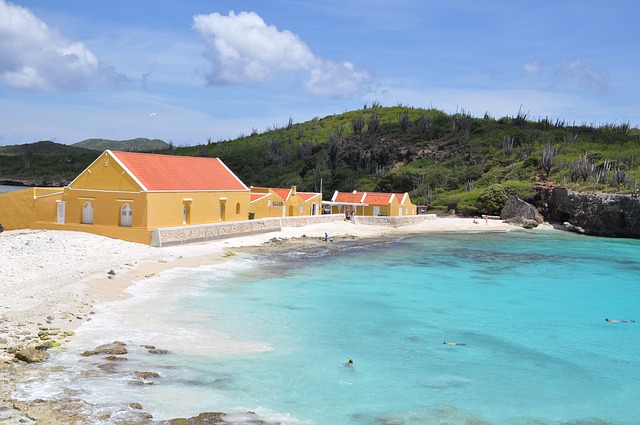
Boulder, Colorado, USA
- Target: 100% renewable electricity community wide by 2030, interim goal of 40% renewable electricity/50 MW local installations by 2020
- Status: In progress
- RES: Solar energy
- Implementation: Boulder is a small city located in the state of Colorado Rocky Mountains. In December 2016, the City Council voted to commit the City to 80% reduction in community greenhouse gas emissions below 2005 levels by 2050, 100% renewable electricity by 2030, and 80% reduction in organization greenhouse gas emissions below 2008 levels by 2030. At the time of the plan's adoption, 99% of Boulder's energy for electricity, heating, and transportation came from burning fossil fuels. Roughly half of the City's GHG emissions were coming from electricity. Approximately 22% of electricity was being generated by renewables, with approximately 30 MW of local renewable power generation installed. More than half of this was local solar installations.By 2030, an all renewable electricity system aims to include 100 MW of local renewables, which will increase to 175 MW by 2050. This increase signals the City's strategy in moving towards 80% electrification. Electric vehicles and heat pumps for example will replace equipment formerly supplied by natural gas, and will demand greater electricity supply.
To transition to all renewable electricity, Boulder's plan relies on a three part strategy. First is to reduce energy consumption. City-funded pilot projects aim to integrate efficiency with on-site generation and natural gas and petroleum replacement strategies. The City plans to expand demand side management services through the implementation of a municipal utility in lieu of the historic investor owned utility. To lower costs of owning on-site solar, the City plans to establish collective purchase agreements that allow groups to own solar projects. This can help reduce the overall demand for the municipal utility to supply electricity and scale up renewable energy procurement or installation. Second is to replace fossil fuels with renewable energy. The City plan to analyse renewable generation and storage opportunities to replace fossil generation, as well as strategies for replacing natural gas and petroleum-based transportation. Third is to re-design critical community infrastructure and operations through mapping and strengthening resiliency and protection against power failure.
- Population: 108,090 (2016)
- Area: 25.85 sq mi (66.95 km2)
- Link: Local Renewable Electricity Generation Data Dashboard

Breckenridge, Colorado, USA
- Target: 100% renewable energy in municipal operations by 2025, and 100% renewable electricity community-wide by 2035.
- Status: In progress
- RES: Community solar gardens
- Implementation: The town of Breckenridge, Colorado aims to power its municipal operations entirely with solar energy by implementing five community solar gardens. It will achieve this based on the latest community solar gardens law (HB 19-1003) adopted by the state of Colorado, which has allowed dispersed communities to be connected to a renewable energy electric grid, by expanding the concept of community solar gardens, and the concept of “community.” Four of the solar gardens will be in Logan County, in the state’s northeastern corner, and another along Interstate 70 near the town of New Castle. The community solar concept pioneered by the state in 2010 is a model that has been adopted by other states such as Massachusetts, New York, Illinois, and Minnesota.
Initial efforts in local solar development in Colorado did not work due to land costs, jurisdiction (more than 80% of Summit County were federal lands), ownership (remainder were private), and topography (land too forested or steep). A sizeable 2 MW community solar garden required at least 10 acres, which was a challenge for the high-priced mountain resort areas and Boulder County. The previous law also limited subscriptions. Community solar gardens had to be within the same county or an adjacent county to be a subscriber. This meant subscriptions by residents, businesses, and organizations in Denver for community solar were precluded.
The Community Solar Gardens Modernization Act removed the adjacency requirements and stipulated that the solar garden must only be within the service territory of the utility serving the subscriber. The previous maximum of 2 MW was also increased to 5 MW allowing greater flexibility for solar developers and attracting larger subscribers such as school districts.
Calls in recent years have been made to accelerate the modernisation of Colorado's electrical grid through at least one bill introduced by the state. This is in order to build new community solar gardens in rural areas to meet urban demands.
The town of Breckenridge expects to save over $700,000 in energy costs through a 20-year contract with little upfront capital costs. Besides decarbonising the electricity supply to municipal buildings, it is overseeing Alta Verde, an 80-unit affordable housing project with a 500-kW on-site solar array. The town aims for all new construction to be net zero. Source: mountaintownnews.net
- Population: 4,945 (2019)
- Area: 6.04 sq mi (15.65 km2)
- Link: Summit Community Climate Action Plan
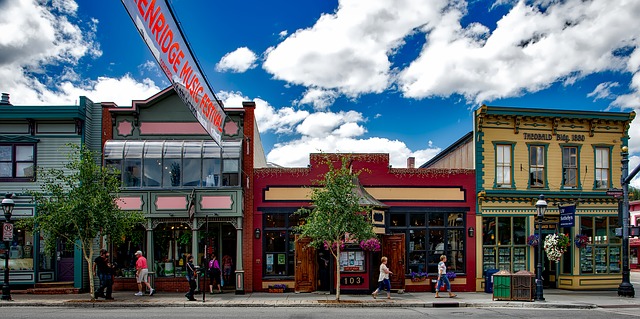
- © David Mark
Byron Shire, Australia
- Target: Zero-emissions renewable energy community wide by 2025
- Status: In progress
- RES: Rooftop solar phototovolatics
- Implementation: Byron Shire is a community of around 31,500 people located in the Northern Rivers region of New South Wales (NSW), Australia. Since 2014, the Shire has been making efforts to cut emissions through the launch of a community-owned clean energy generator focusing on solar photovoltaic (COREM - Citizens Own Renewable Energy Mullumbimby), a strong uptake of rooftop solar and the cooperation of energy retailer ENOVA, through which Byron buys and distributes renewable energy from a range of sources. In 2015, the Shire set the goal of transitioning away from non-renewable energy sources and to reduce greenhouse gas emissions to zero within 10 years. It aimed to be the first in Australia to achieve this goal. This commitment, prompted by a visit by the think tank Beyond Zero Energy, also built on Byron Shire's Low Carbon Strategy that laid out how municipal operations could reduce greenhouse gas and protect the community from the impacts of peak oil. The Energy Strategy would focus on the several aspects namely: renewable energy; building retrofits; electric vehicles, cycle ways and public transport; land use management and vegetation; and waste and waste water management.
- Population: 31,556 (2016)
- Area: 566.7 km2 (218.8 sq mi)
- Link: https://zerobyron.org/energy/
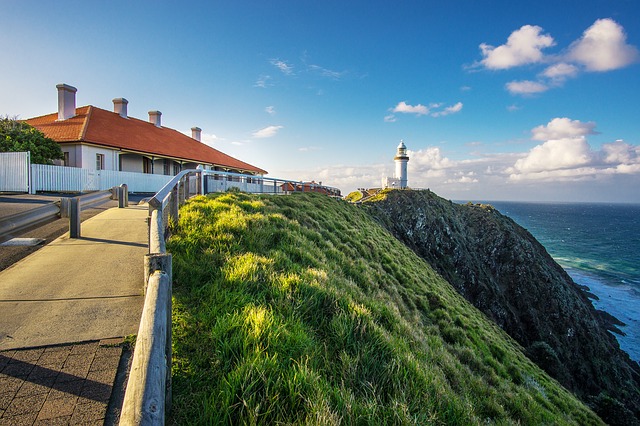
Cambridge, Massachusetts, USA
- Target: 100% renewable energy in buildings and transportation by 2035
- Status: In progress
- RES: Offshore wind and solar power, alongside energy efficiency retrofits, energy standard updates, public transportation improvements
- Implementation: Cambridge is committed to 100% renewable energy community-wide including by 2035, with the goal of achieving net-zero greenhouse gas emissions by 2050. Local organisations have also lobbied lawmakers to transition to 100% renewable electricity by 2045.
The targets will require strong measures to accelerate the transition via changes to current standards. The targets are underscored by the proposed H.2836 bill, which was sponsored by state Rep. Marjorie Decker and state Rep. Sean Garballey. The bill was supported by Environment Massachusetts along with the state chapter of the Sierra Club, as well as 150 local officials and other groups from across the state. The transition to renewable energy also drew strong support from medical professionals and medical students, who argued that the continued use of fossil fuels will damage public health especially amongst the vulnerable.To achieve the 100% goal, Environment Massachusetts has released a report outlining a series of measures including increasing energy efficiency efforts and updating energy standards, improving public transportation and creating walkable communities to reduce car dependency, developing offshore wind projects, and increasing solar power generation. One vital aspect of the city’s environmental and climate goal is the reduction of building energy use given that they are responsible for over 80% of the city’s total emissions, more than transportation and waste combined. The city's Cambridge Energy Alliance program assists residents and small businesses to reduce energy consumption by encouraging energy efficiency measures and investing in renewable energy technologies. Companies can refer to the city's energy requirements for LEED building and net zero energy planning. Source:cambridgema.govThe environmental group 350 Mass and Act on Mass created an initiative to collect signatures that asked voters to direct their representatives to vote for 100% renewable energy legislation, and to require that committees to make their votes on the legislation public. The aim was to convince lawmakers that voters supported renewable energy and wanted to hold their representatives accountable for their votes on this topic.The bill has yet to be passed due to the urgency of the coronavirus pandemic. But the topic of renewable energy and climate change have been kept in the forefront of recent discussions.
- Population: 118,927 (2019)
- Area: 7.10 sq mi (18.38 km2)
- Link: Climate and Energy - CDD - City of Cambridge, Massachusetts, Cambridge Community Electricity program
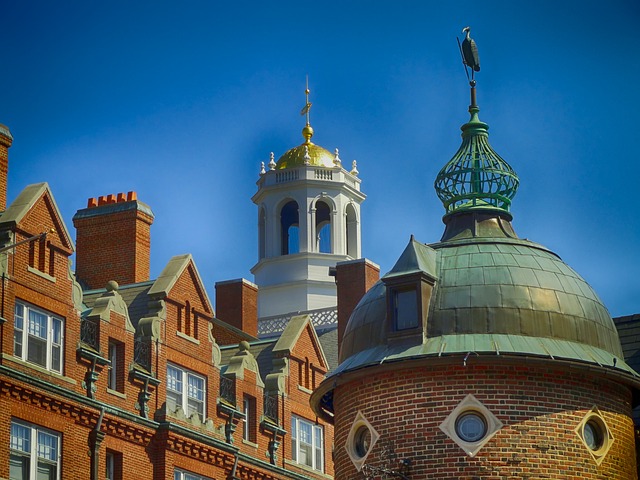
- © David Mark
Canberra, ACT, Australia
- Target: 100% renewable electricity supply by 2020.
- Status: In progress - 47MW renewable energy capacity (2013) in Australian Capital Territory (ACT).
- RES: Wind and solar farms.
- Implementation: Canberra covers the 100% through auctioning, meaning the purchase of electricity from several wind and solar farms. Until 2017, the government commissioned three solar and three windfarms to respectively provide 44MW and 200MW, accounting for 60% renewables. Additional 200MW wind and 50MW solar capacity are to cover the interim target of 90% by 2020. Increased annual electricity bills by 2020 are to be partly compensated by annual average savings through the free replacement of downlights. Investments will be made in renewable research programmes and training, as well as the building of headquarters and maintenance facilities . So far, AUD $400 million local investments have been achieved in the auctioning process.
- Population: 410,301
- Area: 814.2 km²
- Link: https://www.environment.act.gov.au/energy/cleaner-energy/renewable-energy-target-legislation-reporting
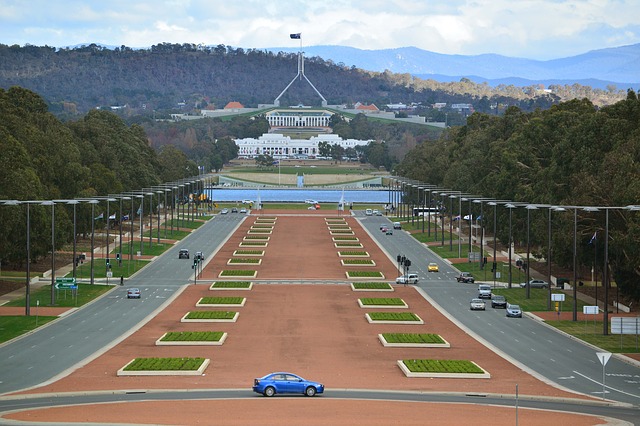
Cape Verde
- Target: 100% renewable energy by 2020, become a model for zero emissions on a global scale and a knowledge hub for several sub-regions.
- Status: In progress
- RES: Windpower
- Implementation: Cape Verde is an island country spanning an archipelago of 10 volcanic islands in the central Atlantic Ocean. It is located 570 kilometres off the coast of Western Africa. In 2006, its Government adopted a law which sets out licensing procedures for independent power producers and auto-producers. In 2011, it determined a more detailed renewable energy policy framework to include a roadmap on how to reach the 100% RE target. The decision was based on scientific based discussions on the benefits of the goal. The high dependence on imported fossil fuels to meet its energy demand meant that a shift to 100% renewable energy was needed – especially as energy demand is predicted to rise. The Cape Verde government thus decided to invest renewable energy generation in order to not only provide electricity to inhabitants directly, but to also produce desalinated water, extend the energy grid, and provide energy storage options. To gain public support for the energy transition, the government held public consultations which were held in each of the four islands where wind projects would be built. Meanwhile, comprehensive Environmental and Social Impact Assessments were conducted. Local landowners were engaged in the siting of the projects and a consideration about securing grazing rights underneath the wind turbines was included in the course of involving the island's livestock herders.
- Population: 539,560 (2016)
- Area: 4,033 km2 (1,557 sq mi)
- Link: https://sustainabledevelopment.un.org/partnership/?p=2271

